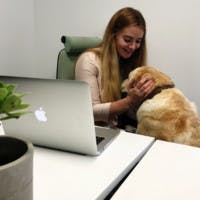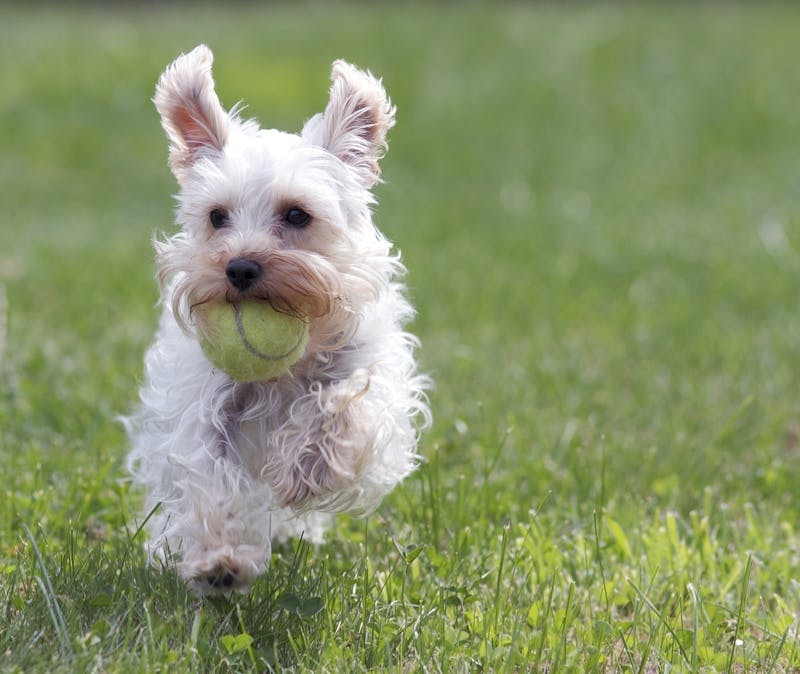You are ready to start your new house sitting assignment. These are exciting times, maybe a new city, new people and a new dog. How can you make a good impression to both pet/home owner and the dog? A Natalia Rozas de OaLaughlin is a certified dog trainer for over 9 years and shares her tips when meeting a dog for the first time.
Trending posts
Purr-use some of the top blogs our members have been loving this month- Top male dog names for your new furry friendGot a new furry family member in your pack? Check…

- Top female dog names for your new fluffy palWelcoming a new pooch into your family? Explore…

- 250+ gray cat names your silver feline will loveRecently welcomed a fluffy gray bundle of joy into…

- What are normal pet sitting rates?Discover the average pet sitting rates for animals…

- Unique dog names to stand out from the packDare to be different with our list of the best…

Natalia is an expert in dog training
"As a dog trainer I visit many unfamiliar dogs with behavioural issues. Today I will share with you my top training tips to befriend most dogs when dog sitting."
Tip #1: Gather information
Before your first visit ask lots of questions.
- Name, breed, age? Up to date in vaccinations?
- Food allergies or medical problems? (Allergies are important to know because you will be using treats!)
- What is the hound's daily routine?
- Anything else the owner wants to tell you about? (Anecdotes, cute stories, this will give you good conversation starters)
Find out lots about the dog before you meet - is he nervous for example or has a favourite blanket?
Tip #2: Bring dog treats to the meeting
Make the dog like you right away! Food is a primary reinforcer and 99% of dogs will do anything for a treat. The size of those treats should be HALF of your pinky's fingernail. Yes, that small!
Give a dog a treat - and be a friend for life!
Tip #3: Use dog treats wisely and in a timely manner
Only give your new canine acquaintance a treat if he/she behaves properly. Pay attention to what the dog is doing (while you talk with your clients) and give him a treat when well behaved. This is called operant conditioning. By rewarding a behaviour the dog will start repeating it more often (in the hopes of getting more treats).
If you take too long to give the pooch his treat, the moment will be gone and you will be rewarding something different. Keep treats at your fingertips because timing is very important!
Good boy! Use those treat wisely.
Tip #4: Learn about dog body language
A very recent scientific study discovered that experienced dog handlers were much better at recognising fear in dogs by looking at their body postures. Getting that experience is probably the most important thing you need to do. By understanding the emotional state of a dog, you will know how to approach him.
Read a dog's body language to understand what they are feeling.
Putting it all together
Recipes to survive two of the most common greeting scenarios:
Scenario #1:
The energetic and friendly dog. As soon as you get in the house he barks, bounces on you and tries to lick your face.
Coping with an over enthusiastic dog...
What do you do?
- Tell the owner to relax. Dogs greet each other by smelling and licking their faces and because humans have their mouth so high they have to jump. Besides you love dogs that are so friendly!
- While you are saying this - IGNORE - the dog! Keep moving and turning around to prevent the dog from jumping on you. NEVER push or knee the dog, just avoid eye contact, cross your arms and keep moving (this will make the dog "fall" to the floor).
- After 1-2 min the hound will give up for a few seconds and YOU MUST BE READY! As soon as the pooch is on the floor, you reach down and say "hi" and pat him on the side.
- If he jumps on you, turn around and avoid eye contact again.
- As soon as he is back on the floor, pay attention and greet him.
- Keep this 'dance' going until the hound can stay still on the floor for about 5 seconds while you pet him. At this point, and if the dog is still on the floor give him a treat.
It only takes up to 10 minutes for most hounds to realise all they have to do is stay on the floor to get your attention and treats!
Scenario #2:
The shy dog. This pooch doesn't want to come near you. Every time you extend your hand towards him he backs away and hides.
How to approach a shy dog on your first meeting.
What do you do?
- Never force a fearful dog to interact with you. Instead, sit down to talk with your clients. You can tell them that you don't want to scare their furry friend and are waiting for him to approach on his own.
- Make sure you have a treat in your hand and waita|just wait. Eventually the hound will come and try to smell you. Do not make eye contact when the pooch approaches you, keep talking to the owners and let the dog find the treat in your hand.A
- A few repetitions of these will tell the hound that your are not a threat, quite the opposite actually!
When meeting fearful dogs never pat them on the top of their heads or hover above them and avoid direct eye contact. Instead turn your head to the side and let them approach your hand on their own.
Use these tips to see a happy dog when you first meet them on your house & pet sitting assignment.
Hope these tips will help you with future successful first meetings. For more information on training methods and dog behaviour or if you have questions, visit www.dog-training-excellence.com

